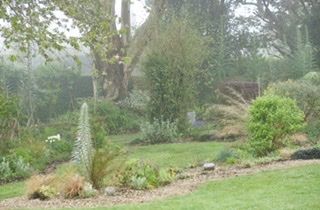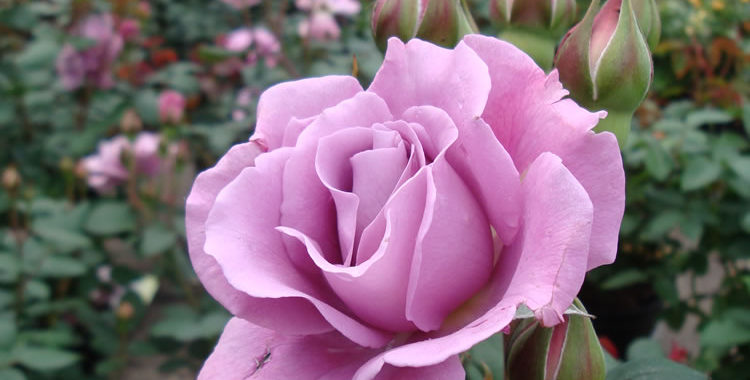Top 10 things to do in
your garden now
1 Photograph your garden- it is amazing how we forget.
2 Visit garden centres to see what plants/shrubs are flowering now to fill in gaps
3 Divide large clumps of perennials – we get more plants, free up space and allow for better growth next year.
4 Take hardwood cuttings – this is when this year’s growth has become harder – firmer in other words not soft.
Take care to choose a healthy parent plant free from pests or disease and use a sharp, sterilised secateurs or knife. Careful labelling is key and should include the date the cuttings were taken, along with the name of the parent plant, use a compost 50 / 50 sand in a pot. Plant around the edges of the pot. Also, there can be a low rate of success so take lots. Unlike soft and semi-ripe cuttings, hardwood cuttings do not require bottom heat or a moist atmosphere. If you have space you can also simply dig a slit trench half the height of the cuttings and fill the bottom with sharp sand or grit.
Insert the cuttings vertically, to a third to half of their length and back-fill the soil, firming them in. You can use a hormone rooting powder, but this is generally felt to be unnecessary. Water well and label the cuttings so you know what they are. A cold frame can be placed over the top to encourage faster rooting if required.
Hardwood cuttings are very slow to form roots, so don’t expect them to root fully until at least the next spring. If rooted well the cuttings will sprout strong shoots and grow away.
Ideal shrubs for hardwood cuttings are Buddleia, weigela, privet (Ligustrum), Philadelphus, forsythia and willow, but you can experiment with any woody shrub that takes your fancy. Taking cuttings is free, and if they don’t succeed, no harm will have been done. Others plants eminently suited to being propagated from semi-hardwood cuttings include many shrubby evergreens such as rosemary, sage, lavender, box, escallonia, holly, viburnum, hebe, camellia, ceanothus, cistus and choisya. Good luck.
5 Plant bulbs for spring – wait till November to plant tulips. Think also of indoor bulbs for Christmas such as Hyacinths, plant NOW for Christmas. Narcissi Paper White take 6 weeks from planting to flowering and have an amazing scent to fill your home at Christmas when they are finished flowering plant them out into your garden the same with your Hyacinths.
6 Plan your flower borders for next summer — look at midsummer magazines etc for ideas also include spring as it will help you choose bulbs.
7 Get your leaf pile organised — you can’t buy leaf mould.
8 Trim lawn edges, scarify and repair lawn, use a low nitrogen law feed.
9 Cut your hedges before frosts – pruning at this time of year is for shape.
10 Veg garden plant garlic, onions, broad beans and green manures.
It is very nice to have a neat tidy garden with good structure but don’t forget to leave some areas for all the little creatures to hibernate in – so don’t be too tidy. Leaf and wood piles make great places for hibernation and shelter. I take down my hanging baskets and replace with bird feeders. Birds are essential for our gardens and they do need a helping hand. Containers with water can act as little ponds for frogs and of course sources of drinking water for our little visitors.
There are lots of other jobs to do as well, but try and get as much done now before it gets too cold to venture out.




 Hippeastrum from South Africa and Amaryllis from South America.
Hippeastrum from South Africa and Amaryllis from South America. In autumn bring back into the house, as they require a temperature of 9 -13 C from mid-November for around 10 weeks, keep the compost moist, stop feeding, remove old yellowing foliage, do not dry off bulb or cut new healthy foliage.
In autumn bring back into the house, as they require a temperature of 9 -13 C from mid-November for around 10 weeks, keep the compost moist, stop feeding, remove old yellowing foliage, do not dry off bulb or cut new healthy foliage.